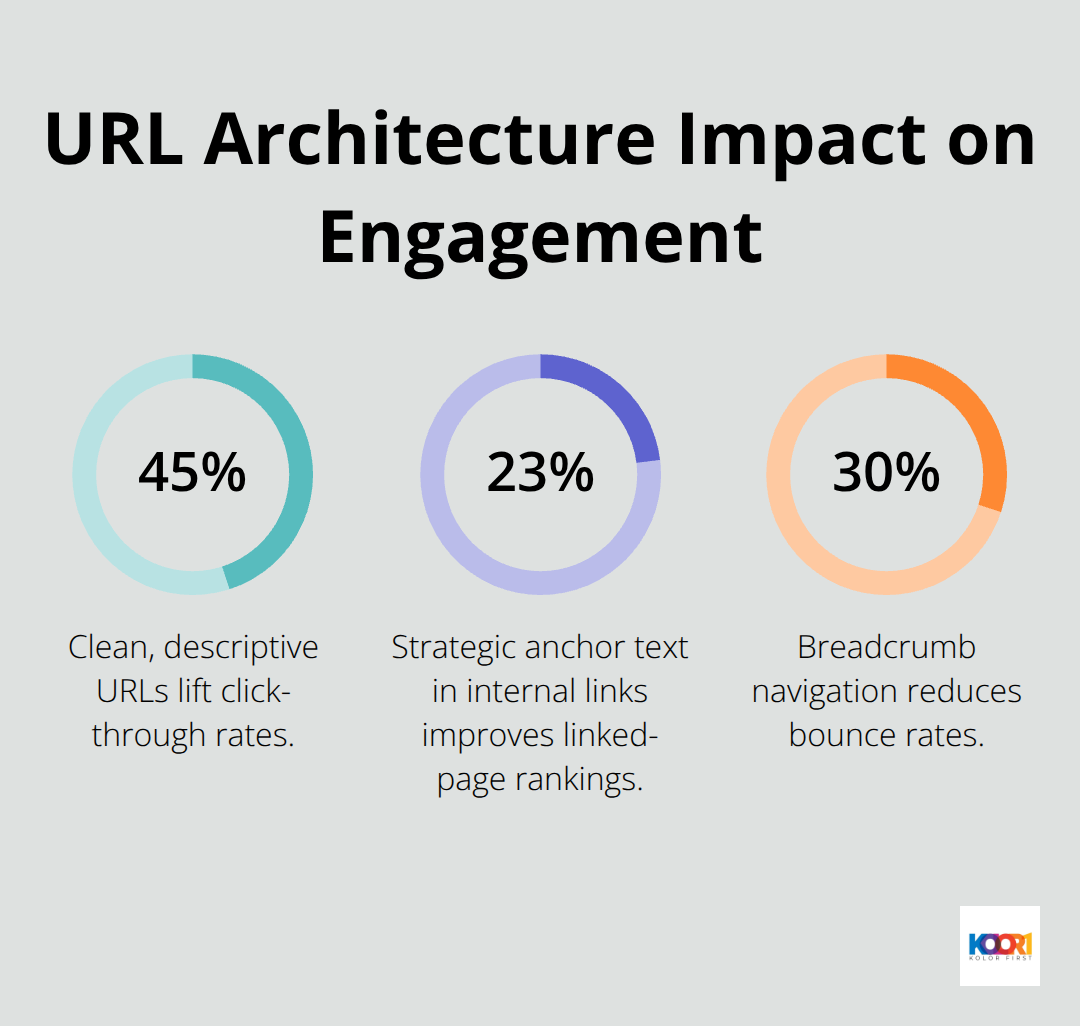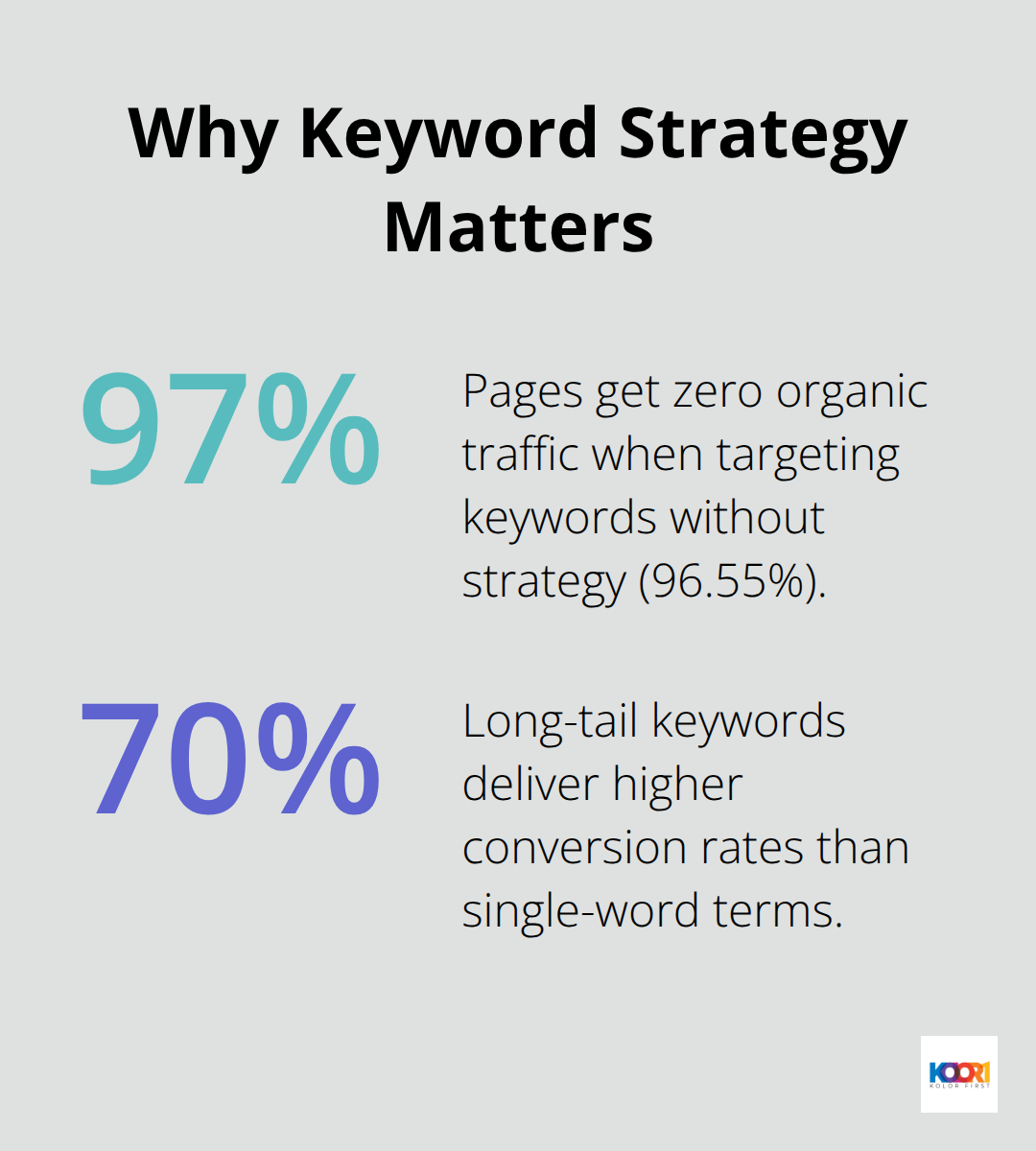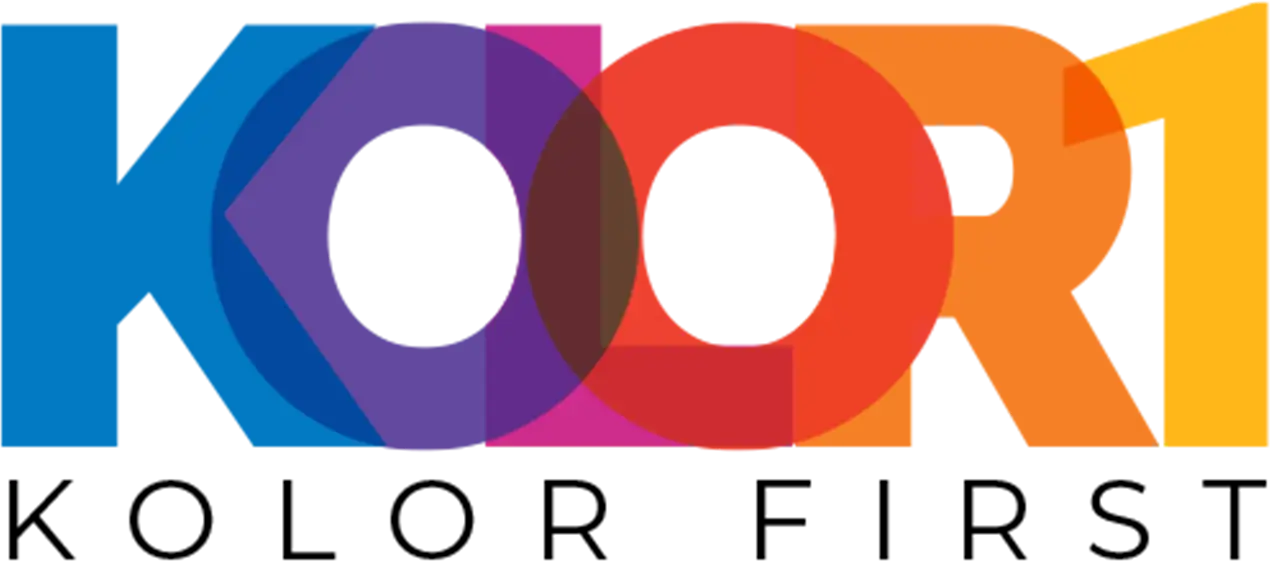Organic SEO optimization drives 53% of all website traffic, making it the most valuable digital marketing channel for businesses today. Most websites miss massive opportunities by ignoring technical foundations and content strategy.
We at Kolorfirst LLC see companies struggle with scattered SEO efforts that waste time and budget. This guide covers proven techniques that actually move rankings and generate sustainable organic growth.
What Technical Elements Actually Impact Your Rankings
Technical SEO forms the invisible foundation that determines whether search engines can properly crawl, index, and rank your website. Google’s Core Web Vitals is a set of metrics that measure real-world user experience for loading performance, interactivity, and visual stability of the page. Most websites still fail basic performance tests, with the average site taking 3.21 seconds to load on desktop and 4.2 seconds on mobile devices.
Speed Optimization That Moves Rankings
Page speed optimization starts with image compression and proper file formats. WebP images reduce file sizes by 25-35% compared to JPEG without quality loss, while lazy loading prevents unnecessary resource consumption. Google PageSpeed Insights shows that removing unused JavaScript can improve loading times by 0.5-2 seconds. Content Delivery Networks like Cloudflare reduce server response times by 40% on average when they serve content from geographically closer servers. Database optimization and caching plugins can cut loading times in half for WordPress sites.
Mobile Experience Standards
Mobile-first indexing means Google uses the mobile version of a site’s content for indexing and ranking. Sites with responsive designs see 67% higher conversion rates than those with separate mobile versions. Touch targets must be at least 44 pixels wide with 8 pixels of spacing to meet Google’s usability standards (these measurements prevent accidental taps). Viewport configuration and proper CSS media queries prevent horizontal scrolling issues that cause 57% of mobile users to abandon sites immediately.
Strategic URL Architecture
Clean URL structures with descriptive paths improve click-through rates by 45% compared to parameter-heavy URLs. Internal links pass authority between pages, with sites that use strategic anchor text seeing 23% better rankings for linked pages. Breadcrumb navigation reduces bounce rates by 30% while it helps search engines understand site hierarchy.

XML sitemaps should contain only indexable pages and update automatically when content changes to maintain crawl efficiency (this automation prevents outdated information from confusing search bots).
These technical foundations set the stage for content optimization strategies that transform your website into a traffic magnet.
What Content Strategy Actually Drives Rankings
Keyword research determines content success, yet most businesses target impossible terms or ignore search intent completely. 96.55% of pages get zero organic traffic because they target keywords without considering competition levels or user behavior patterns. Long-tail keywords with 3-5 words generate 70% higher conversion rates than single-word terms, while question-based keywords capture users at different funnel stages. Tools like SEMrush reveal that targeting keywords with 100-1,000 monthly searches often delivers better ROI than chasing high-volume terms with established competitors.

Strategic Keyword Implementation
Primary keywords must appear in the first 100 words of content, with secondary keywords distributed naturally throughout the text. Keyword density should stay between 1-2% to avoid penalties, while semantic variations and synonyms help pages rank for multiple related terms. Header tags create content hierarchy, with H1 tags containing primary keywords and H2-H3 tags incorporating long-tail variations. Meta descriptions that address user intent and include clear calls-to-action can increase click-through rates. Meta descriptions between 150-160 characters that match search intent can improve CTR by 30%, while compelling calls-to-action in descriptions drive more qualified traffic.
Content That Converts Traffic
Content length correlates with rankings, with pages averaging 1,890 words ranking higher than shorter alternatives. However, word count means nothing without addressing user intent completely. Google’s RankBrain algorithm prioritizes content that keeps users engaged, with dwell time over 3 minutes signaling content quality. Including statistics, case studies, and actionable tips increases social shares by 40% while building topical authority. Fresh content optimization updates every 6-12 months prevent ranking decay, with updated pages seeing 111% more organic traffic growth than static content.
Content Structure That Search Engines Love
Search engines reward well-organized content that answers user questions directly. Featured snippets appear for 12.3% of search queries, and structured content with clear headings captures these positions more frequently. Lists, tables, and step-by-step guides perform exceptionally well in search results (these formats match how users consume information online). Schema markup helps search engines understand content context, with pages using structured data seeing 30% higher click-through rates. Internal links between related content pieces strengthen topical authority and keep visitors engaged longer on your site.
Strong content foundations support effective off-page strategies that build domain authority and expand your reach beyond your website.
How Do You Build Authority Beyond Your Website
Off-page SEO determines 50% of your ranking factors, yet most businesses focus exclusively on their own content. Link acquisition remains the strongest ranking signal, with pages that receive high-quality backlinks ranking 3.2x higher than those without external links according to Backlinko research. Guest posts on industry-relevant sites with domain authority above 40 generate links that increase organic traffic by 55% within six months. Resource page outreach converts at 8% when you target pages that already link to similar content, while broken link tactics achieve 27% success rates. Email templates that mention specific value propositions and avoid generic pitches get 40% higher response rates from webmasters.
Strategic Link Acquisition Methods
Digital PR campaigns that tie into current trends generate significant backlinks through strategic approaches including leveraging testimonials, supporting new business growth, and sponsoring events. You create assets like industry reports, infographics, or tools that attract natural backlinks without active promotion. HARO responses that provide expert quotes result in high-authority backlinks from major publications like Forbes and Entrepreneur. Local citations from business directories improve local rankings by 25%, while consistent NAP information across 50+ directories prevents penalties (this consistency signals trustworthiness to search engines). Social media mentions from verified accounts signal brand authority to search engines, with LinkedIn mentions that carry more weight than other platforms for B2B businesses.
Local Authority Optimization
Google Business Profile optimization drives 28% of searches to business websites, which makes it more valuable than most paid channels. Response rates to customer reviews within 24 hours increase local signals by 12%, while businesses with over 100 reviews rank 87% higher in local search results.

Location-specific pages that target city names plus service keywords capture high-intent local traffic. Local partnerships with complementary businesses create natural backlink opportunities while they expand referral networks (these relationships often provide mutual benefits beyond SEO). Regular posts of updates, events, and offers through Google Business Profile increase visibility in local map results by 35% compared to inactive profiles.
Final Thoughts
Organic SEO optimization requires systematic execution across technical foundations, content strategy, and authority development. Sites that implement comprehensive optimization see 150% more organic traffic within 12 months compared to those that use scattered approaches. Google Analytics 4 tracks organic traffic growth, conversion rates, and user engagement metrics that reveal optimization success.
Search Console data shows keyword positions, click-through rates, and indexing issues that need attention. Monthly performance reviews identify which strategies drive results and which require adjustment. Companies that publish fresh content weekly maintain 434% higher indexed pages than those that update quarterly (this consistency signals active site management to search engines).
Regular site audits prevent technical issues that cause position drops, while ongoing keyword research reveals new opportunities. SEO success compounds over time when you maintain consistent optimization efforts across all ranking factors. We at Kolorfirst LLC help businesses implement comprehensive digital marketing strategies that generate measurable organic growth through proven optimization techniques.






